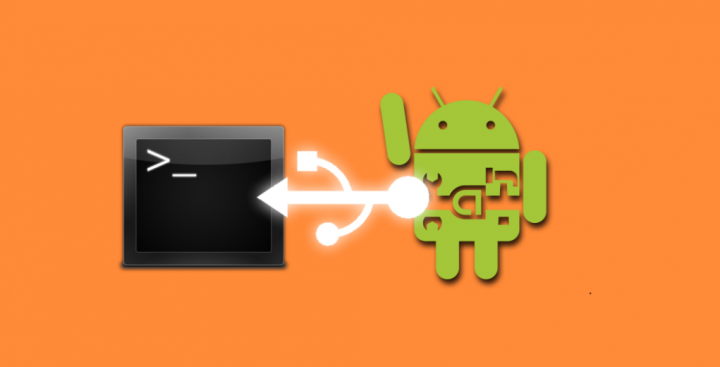
Do you want to set up and install ADB with Android SDK? When we talk about Android modding, some novice users are left wondering or confused by a reference over a reference to a certain “adb”. Well, it is true when you are wondering about something on modding your mobile device or root it in particular. If you are a hardcore Android device user you must have heard about the Android ADB. It is used to send commands to an Android device using a computer’s command line.
Also See: Most Useful ADB and Fastboot Comamnds (2019)
Contents [hide]
ADB Intro:
ADB stands for Android Debug Bridge, a command system that allows you to manage a device from your computer. It works when the device is powered on and booted into OS or Recovery. ADB comes as a part of the standard Android SDK. If you want it then head over here. So a command-line is the only way to manipulate and obtain root access d to perform some advanced operations on your device using root access.
Well, you can do all these things directly on the device using some terminal emulator, it will be quite difficult to run complex commands on the small screen. ADB provides the bridge between your PC and your machine.
How To Setup & Install ADB With Android SDK

Steps To Install ADB
Follow the steps to install ADB with Android SDK:
Step 1: Install Android SDK
Note: While updating this article, the new version of the Android SDK available is r8 and we shall be using it throughout the rest of the article. The tool works in the same way, however, even if you get a later model. In the case of earlier variants though, the location of some tools was quite different and it is recommended that you get the newly available model.
The first step is to download or install the SDK. Then use the link mentioned at the end of this article and download the new version of the Android SDK from there. There are models available for Linux, MS Windows, and Mac OS X. In the case of Windows, both zip file and installer are available but there is not any need to use the installer as a formal installation is not needed.
After you have successfully downloaded the SDK, just extract or unzip the compressed file to a location on your PC. In our case, we have unzipped it to the root of our C drive and that makes C:\android-sdk-windows the installation location of the SDK. Then we shall be referring to this location as the ‘SDK folder’.
Step 2: Download/Install SDK Platform Tools
Earlier, ADB can be used to be added in the SDK by default in the ‘tools’ sub-folder. But now ADB has been relocated to the ‘platform-tools’ sub-folder which needs to be installed as an SDK package. Fortunately, this is very simple and easy:
Simply browse to the SDK folder and then launch SDK Manager. After you successfully launching it for the first time, a window appears to select packages to install. The first option starts with ‘Android SDK Platform-tools’. Make sure it is marked, and unmark all the other packages for now. You can also mark/unmark a package after tapping on its name and then choosing the Accept/Reject radio button.
Now just tap ‘Install’ and wait a while until the platform-tools are installed. Now you’ve a ‘platform-tools’ folder in your SDK folder. That folder will add ADB and all its dependencies.
Also See: ADB Sideload SuperSU zip from TWRP Recovery
Step 3: Set Path variable
Now once you have successfully installed ADB but using it this way needs you to either use the full path of the ADB command (C:\android-sdk-windows\platform-tools\adb) or to change the directory to the subfolder of platform-tools. But it becomes quite a hassle. To make ADB with many other platform tools or Android SDK tools easily accessible from anywhere at the command line. So all you need to do is to add their paths to the PATH environment variable. This technique will apply to Windows users only. Well, if you are a Mac or Linux or user, add the ‘platform-tools’ and ‘tools’ sub-folders of the Android SDK to your PC PATH variable with the help of the standard method for your OS.
- In case, if you have no experience while editing PC environment variables, you can then make a System Restore point now so that you can easily move back to it in case if something goes wrong.
- If you are working with Windows 7 you can then right-tap the ‘Computer’ icon and tap ‘Properties’. Now tap ‘Advanced System Settings’ from the options located in the left pane to bring up the ‘System Properties’ window. However, Windows XP users will directly get this window when they right-tap on ‘My Computer’ and tap ‘Properties’.
- From the System Properties window, click the ‘Environment Variables’ button located on the ‘Advanced’ tab.
Further;
- Then search the ‘Path’ in the ‘System variables’ section and double-tap it to edit it.
- Make sure NOT to remove the existing entry in ‘Variable value’ or it will mess up with things on your PC. Simply add the following string to the end of it, including both the semi-colons:
;c:\android-sdk-windows\tools;c:\android-sdk-windows\platform-tools
If you have unzipped the SDK’s contents to another directory, then simply use that one for your PATH variable.
After you successfully adding the string, this is what my Path variable seems like:
C:\Program Files\Common Files\Microsoft Shared\Windows Live;C:\Program Files (x86)\Common Files\Microsoft Shared\Windows Live;%SystemRoot%\system32;%SystemRoot%;%SystemRoot%\System32\Wbem;%SYSTEMROOT%\System32\WindowsPowerShell\v1.0\;C:\Program Files (x86)\ATI Technologies\ATI.ACE\Core-Static;C:\Program Files (x86)\Windows Live\Shared;C:\Program Files\Java\jdk1.6.0_23\bin;C:\Program Files (x86)\Java\jdk1.6.0_23\bin;C:\android-sdk-windows\tools;C:\android-sdk-windows\platform-tools
Don’t fret if yours does not add some of the other text. The important thing is the way you add a new entry to the existing one, and the way the earlier entries MUST be left unchanged. Make sure that the semi-colons are important to separate every path variable entry from the next and earlier ones. Whenever you have successfully added the path, your machine might need to reboot.
If you messed up while editing the Path variable and ended up removing the earlier existing entries. You can then restore the System Restore point you made and retry, but you should be more careful this time.
Step 4: Install USB drivers
At last, you need to install or download the USB drivers. You probably don’t need to perform this step, depending on your mobile device. After using a device that ships with a stock Android OS like the Nexus One, this will be necessary. In case of other devices that ship using their custom variant of Android and some tools to sync the device with the computer, like devices from HTC that ship with HTC Sync or devices by Samsung that ship with Samsung’s own software, the perfect driver for your device will be installed automatically with that software package.
- The first step will be to download or install the USB drivers. If you want to do this, simply launch SDK Manager from the SDK folder and then tap on ‘Available packages’ in the left pane.
- You can now expand ‘Third-party Add-ons’ followed by ‘Google Inc. add-ons’ and then check ‘Google Usb Driver package’.
- Tap ‘Install Selected’ and in the window that appears. Simply tap the ‘Accept all’ radio button followed by the ‘Install’ button. Wait until the USB drivers are downloaded or installed in the Android SDK.
- The drivers for both 64 bit or 32 bit systems will now be added in the SDK folder under ‘usb_driver\x86’ and ‘usb_driver\x64’ sub-folders respectively.
Further;
After you successfully install the USB drivers, you can now install or download them to your PC as follows:
- From the device, head over to the home screen. Then hit the menu, choose Applications > Development, and turn on USB Debugging.
- Now connect or plug your mobile into the computer through USB. New hardware installation should kick in, and it will start searching for the drivers.
- You can then manually point the drivers to the folder suitable for your OS and allow them to install.
- When drivers have installed, you can then verify successful installation by moving to Device Manager. Your mobile device showing under ‘ADB Interface’.
Also See: How to Change Screen Resolution via ADB
How To Set Up ADB
In this section, you can use or set up adb to manipulate your mobile in whatever way you want. On Windows, the best thing to do so is using the command prompt. To ensure that adb has been properly set up, simply run the command prompt and input ‘adb devices’ and press enter. Your connected device should display up with a serial number.
Download: Android SDK
Conclusion:
Here’s all about “How to set up and install ADB with Android SDK ADB”. Is this article helpful? Did you face any issues while installing ADB? Share your thoughts with us in the comment down the section below. Also, for further queries and questions let us know in the comment section below!
Also Read:






